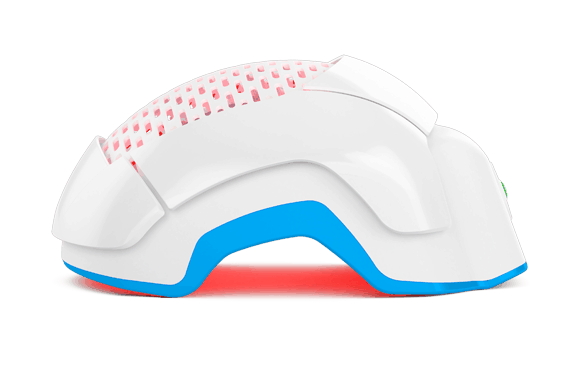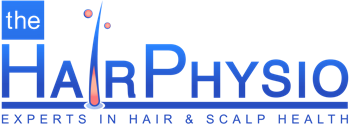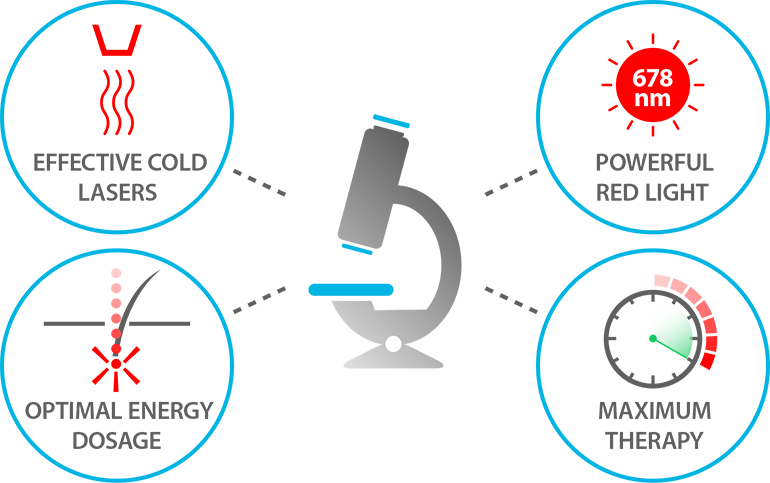Introductory Summary
Low-level laser therapy (LLLT) is a form of medical treatment that applies low-power lasers to the skin. The application of low-power lasers has been shown to relieve pain and stimulates and enhances cell function.
LLLT is an FDA-cleared solution using laser technology to treat hair loss and thinning hair for both men and women. LLLT uses non-invasive, pain-free light technology to stimulate hair follicles and scientifically induce regrowth of thicker, fuller hair.
A 2013 study found that laser hair treatment provided a 39 percent increase in hair growth over a period of 16 weeks.
Low-Level Laser Therapy and Hair Loss
LLLT is an effective way to treat the progression of hair loss and help promote hair growth. Laser therapy has been found to slow or even halt hair loss, and with consistent use has also been found to grow and thicken existing hair.
Only within the past decade has LLLT gained acceptance in treating hair loss. Now, the most reputable doctors in the field of hair restoration and hair transplant surgery including world renowned doctors in the field of hair loss have been swayed by the evidence from clinical trials.
How Does Low Level Laser Therapy Work
The wavelengths of light in the visible spectrum are between 400 and 700 nanometers (nm). The laser energy used to slow or stop the progression of hair loss is visible in the red-light range of the spectrum around 670nm.
LLLT make use of the first law in photochemistry (Grotthuss-Draper law): ‘Light must be absorbed by a chemical substance in order for a photochemical reaction to take place.’
In LLLT the relevant ‘chemical substance’ is the respiratory enzyme ‘Cytochrome c oxidase’ which is involved in the electron transport chain in mitochondria.
We call this process photo-biostimulation: Laser light of the optimal wavelength enters skin tissue to the correct depth and reaches hair follicle roots; the protons stimulate the enzyme; this excites the energy producing mitochondria; and stimulates a cascade of pro-growth and follicle protective processes:
- Increased energy (ATP) production in mitochondria
- Modulation of reactive oxygen species
- Enhanced gene transcription
- Upregulation of pro-growth processes in follicular epithelium
Results in
- Decreased inflammation
- Reduced effect of DHT
- Thickening of the hair
- Increased growth factors
As a result, hair shedding decreases, density and thickness improves, scalp health increases, and hair growth is stimulated.
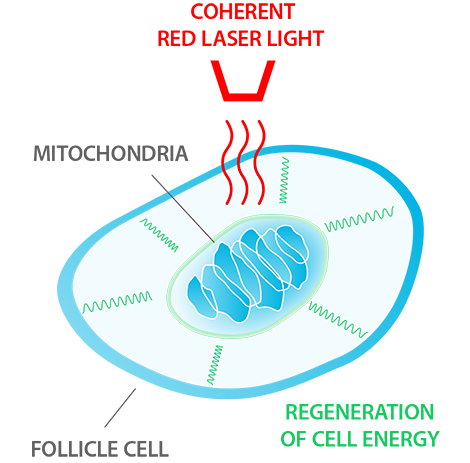
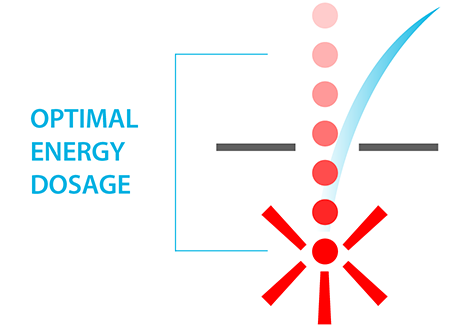
What Defines A ‘Clinical Strength’ Low Level Laser Therapy
Different wavelengths of light will result in distinct laser energies, which penetrate human tissue at various depths.
The treatment area must have the light penetrate to the appropriate depth of 3 – 5mm for the subsequent energy absorption required for the success of LLLT.
Hair follicles can absorb laser light at a range of wavelengths, but the bio-stimulation of the target Cytochrome c oxidase is double at a wavelength of 678nm compared to 650nm.
So, the ideal for clinical strength hair rejuvenation is to use lasers that are optimised to a wavelength of 678 nm.
Dosage is calculated as a factor of the ‘number of lasers per square centimetre’ multiplied by the ‘power of those lasers’ resulting in a ‘power density’. Dosage is the power density measured in joules per centimetre squared multiplied by the amount of time of exposure.
No. lasers per cm² x joules / second x the number of seconds of the treatment.
Doses between 0.01 and 10 J/cm² are therapeutic.
More than 6 J/cm² are considered ideal for therapeutic effect.
More than 10 J/cm² are inhibitory.
Does Low Level Laser Therapy Work
LLLT is a highly viable option for men and women with minimal to moderate ‘pattern hair loss’. LLLT is thought to increase blood flow and stops hair loss in 85% of cases, while stimulating new hair growth in 55% of cases according to the medical literature.
Individual responses to laser therapy may differ and results do vary from person to person.
The results of laser therapy can be inconsistent, and the conclusion of the medical community seems to be that it appears to work for most people, but not for all.
Possibly for a number of reasons: overall health of the person, progression of hair loss, type of hair loss, diet, lifestyle and genetics.
Available Laser Treatment Options
There are two choices when selecting low level laser therapy as a hair loss option. Both of these options end up accomplishing pretty much the same goal, to slow or stop hair loss and promote new healthy hair growth.
Visit A Hair Loss Clinic - Commonly, laser therapy options for in-clinic hair loss treatments consist of visiting your local hair loss clinic 2-3 times per week for up to 12 months to sit underneath a dome that administers light into the scalp to help strengthen and stimulate hair growth. Each treatment takes about 30-40 minutes per session. The biggest problems with in-clinic treatments are the cost, the inconvenience and the laser machines can be outdated and inferior compared with todays at home laser devices.
Use At Home Products - With the development of new technology, the hair loss clinic laser machines are now becoming less common. A more convenient and preferred approach to treating hair loss has now been introduced into the marketplace. It is now possible to purchase and at-home low level laser therapy device (such as the Theradome LH80 Pro) that is more powerful, has more lasers, is more convenient and affordable whilst providing better coverage.
The Theradome LH80 Pro we recommend as the best in the market for delivering the maximum effective dose of 9 Joules/cm² over the whole head.
There are a lot more reasons too. See page for more details.

